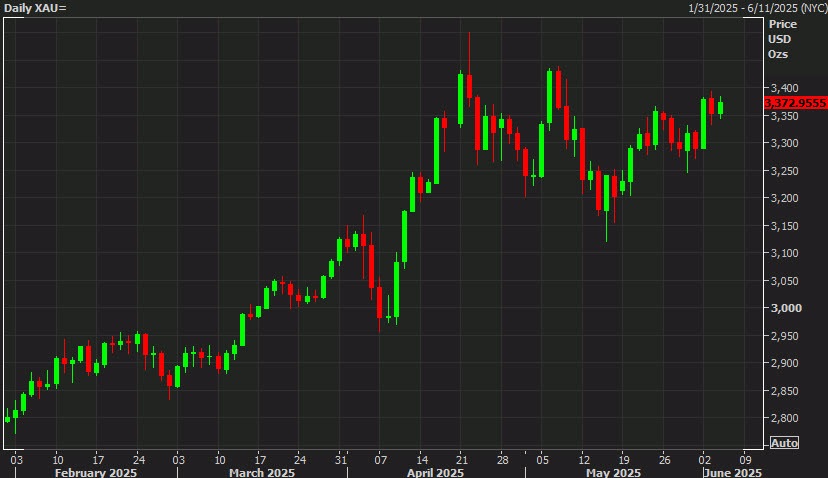
Gold prices have surged to record highs this week, driven by escalating geopolitical tensions, shifting central bank policies, and a surge in safe-haven demand. As of June 4, 2025, spot gold was trading at $3,351.49 per ounce, with U.S. gold futures at $3,375 per ounce . In Australia, the price reached approximately A$5,226 per ounce, or A$168.02 per gram .
Key Drivers Behind the Rally
1. Geopolitical Tensions and Safe-Haven Demand
Ongoing geopolitical uncertainties, particularly the trade tensions between the U.S. and China, have heightened investor anxiety. The White House’s indication of potential talks between President Trump and Chinese President Xi Jinping to resolve trade issues has added to market volatility . Such uncertainties have historically driven investors toward gold as a safe-haven asset.
2. Central Bank Policies and Interest Rate Expectations
Recent U.S. economic data, including a relatively strong jobs report, have influenced expectations around the Federal Reserve’s monetary policy. While some investors anticipate potential rate cuts, the Fed’s cautious approach amid ongoing trade and economic risks continues to support gold’s appeal .
3. Central Bank Gold Purchases
Global central banks, particularly in emerging markets, have been increasing their gold reserves. This trend reflects a strategic move to diversify assets and hedge against currency fluctuations, further tightening gold supply and supporting prices.
Challenges Ahead
Despite the bullish momentum, several factors could pose challenges to gold’s continued ascent:
1. Potential Profit-Taking
With gold prices at record highs, there is a risk of short-term profit-taking by investors. Such actions could lead to temporary price corrections, especially if geopolitical tensions ease or economic data surpass expectations.
2. Discovery of New Gold Deposits
The recent discovery of a massive gold deposit in China’s Hunan Province, estimated at 1,100 tonnes and valued at approximately $83 billion USD, has stirred significant market interest . While the immediate impact on global supply is limited, the potential for increased future supply could influence long-term price dynamics.
3. Currency Fluctuations
A strengthening U.S. dollar could make gold more expensive for holders of other currencies, potentially dampening global demand. Currency movements remain a critical factor influencing gold prices.
Outlook
Analysts project that gold prices could experience substantial growth over the next year, with expectations that they could reach $4,000 per ounce globally . However, the market is expected to remain volatile in the short term, influenced by geopolitical developments, central bank policies, and economic data.
Investors are advised to monitor global news and market indicators closely to make informed decisions. While gold’s long-term prospects appear strong, short-term fluctuations necessitate a cautious and strategic approach.
